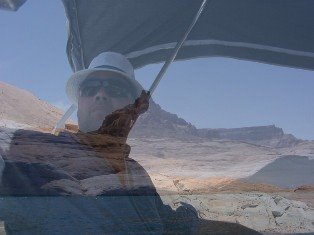Just a couple items before we start, I am going to hit the points that caught my attention. However, I highly recommend you review his slide deck and the resources he has listed on the two web sites below. The slide deck Jim used during his presentation is linked here and to the title of the presentation above.
http://k-12.pisd.edu/c@es/ http://k-12.pisd.edu/open/
As Jim rolled through his slide deck, he pointed out the many differences between who we were as students and the students who attend our schools. In addition, he pointed out something I had never thought about. Back in the day, our TV heroes were individuals and now, our TV heroes are teams of people who have to work together and collaborate. Jim completed the point with a slide that read:
The Lesson from Version 2.0 heroes in TV and teaching?Collaboration – not just sharing – is the way in which our students expect to find in information, solve problems and create new understandings
Sitting in that room, I wrote the following on my note pad. “Individual learning is transforming (or should be) to team learning”. I thought to myself, we have been talking about this for several years but we still have yet to make any major jump
Continuing through his slide deck, Jim started into Web 2.0 and he began with the video “The machine is us/ing us” by Mike Wesch and it is available on both YouTube and TeacherTube. As you watch this video for the first or fiftieth time, think about how long we have had access to this technology and how it has changed our day-to-day lives as well as what impact it has had on our classrooms.
While you debate in your mind how our classrooms have changed for the positive or negative with all this digital and hyper data, consider these items Jim placed on the screen which connect our students.
- Social networking
- Googlization of Everything
- “Fingertip Knowledge”
Googlization? Is that even a word? Hardly a day goes by that I don’t “Google” something or someone and you may be the same way. My library had a card catalog now the world has Google!
Fingertip Knowledge? I looked at my fingertips just now and asked them what they knew! While they didn’t speak to me, if they could they would have told me to Google it! We tend to remember less today because we know more. Yes, it sounds like an oxymoron but think about this point Jim made. We used to remember phone numbers. Lots of phone numbers, yet today if I want to know the number of my cell phone, I have to flip it over as the number is taped on the back. Is this really a new concept or just a new name? Thirty years ago I stood looking at a library of law books in my mother’s office. I asked her boss if he knew all the information in those books. He patted my head and said “No Shawn, I just know where to look.” The modern attorney does too, but now he/she looks them up online. Hmm Fingertip Knowledge!
Continuing on with Web 2.0, Jim showed his Web 2.0 applications slide. While I don’t necessarily agree with running from our mainstream software applications, (A topic for a different blog post), we should be aware of these applications and realize more are being added to the world daily. Note: As I am looking up these sites I am using another Web 2.0 tool called Del.icio.us which is a social bookmarking site. This is my Del.icio.us page and these links are tagged with Web 2.0.
- Google for Educators
- Zoho Office
- Think Free
- AP National News and Google Maps
- Newszingo
- Wikimapia
- Pandora
- Ask Vox
- LivePlasma
- Wikimedia Foundation (Jim made a very good point where he stated we should pay attention to Wikipedia and what is being said about our school districts. Yesterday I looked up Peoria Unified School District. Sure enough, we had an entry so I took that opportunity to update a couple of items.)
- Curriki
- MIT Open Courseware Project
- Creative Commons
- New York Public Library Digital Gallery
The bottom line is personal computing is just that, it is personal and as long as designers and engineers are thinking outside the box, we will continue to see new personal computing tools. Even today, my daughter’s, Sony PSP has built in WIFI and a web browser. I have not looked for a while but I would bet there could be some applications that run on it now, too. How about all the smart phones that double as PDA’s and cameras and unless you just crawled out from under a rock, you have to know about the Apple IPhone which can now use Google Docs!
Oh, and if you are one of those who want to be on the cutting edge by using a mobile device in education, take a look at RT Messaging 4 Education. They are working on applications which will interface with our phones.
What do we do as educators? Do we outlaw these possibly deviant devices or do we embrace what they can do as a communication and education tool? The future battles over this concept are sure to be exciting and VOCAL. However, I will go on record saying the day will come when students will create content on these types of devices and we will consider that normal. For those who don’t believe me, that is okay, there were people who didn’t think paper would catch on either.
In the future, if you ever get a chance to see Jim Hirsch speak live, do it.
Shawn Wheeler Web2.0 T+L2007 Jim Hirsch






 Digg/shawnwheeler
Digg/shawnwheeler Flickr/shawnwheeler
Flickr/shawnwheeler Linkedin/shawnwheeler
Linkedin/shawnwheeler YouTube/ShawnErikWheeler
YouTube/ShawnErikWheeler Del.icio.us/shawnwheeler
Del.icio.us/shawnwheeler Wikipedia/shawn_erik_wheeler
Wikipedia/shawn_erik_wheeler GMail/Shawn Wheeler
GMail/Shawn Wheeler Technorati/shawnwheeler
Technorati/shawnwheeler Blog/Shawn Wheeler
Blog/Shawn Wheeler
No comments:
Post a Comment